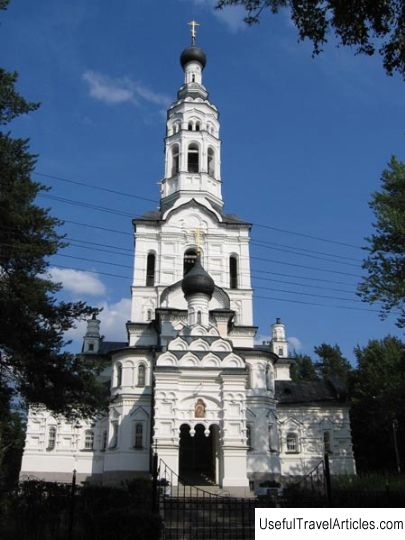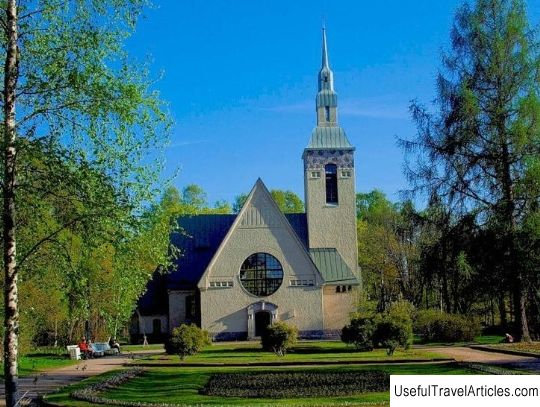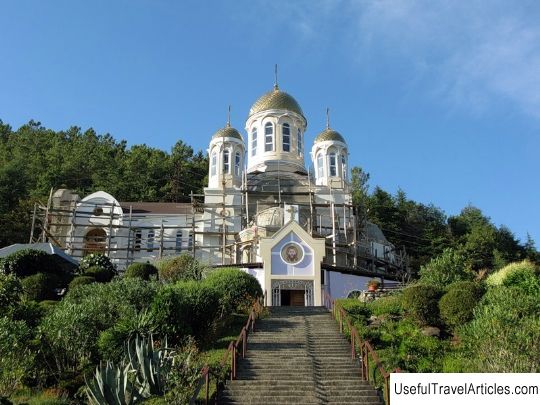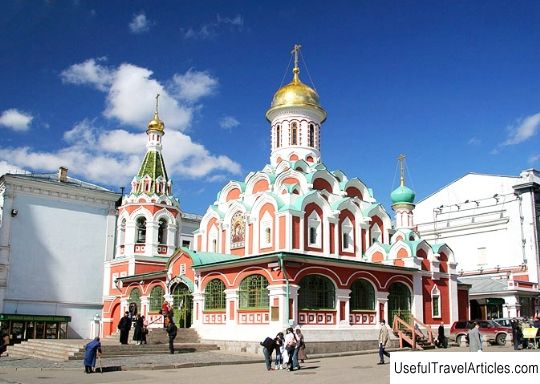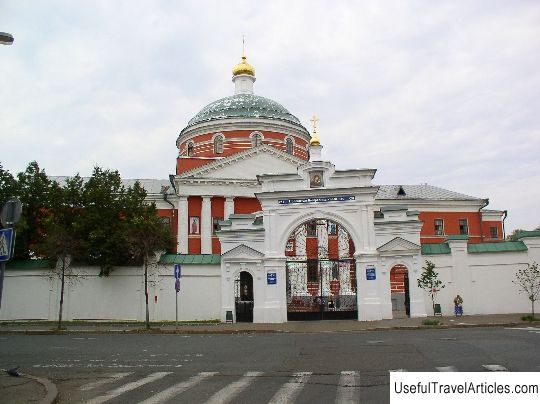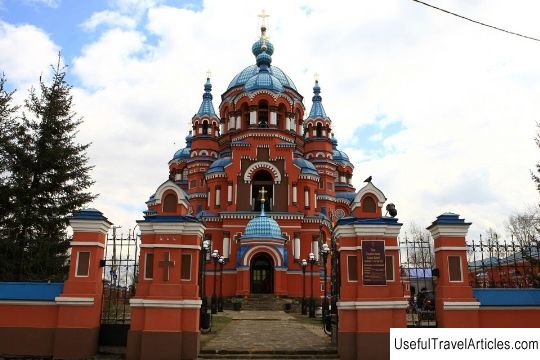Church of the Kazan Icon of the Mother of God description and photo - Russia - St. Petersburg: Zelenogorsk
Rating: 8,3/10 (7905 votes) Church of the Kazan Icon of the Mother of God description and photos - Russia - St. Petersburg: Zelenogorsk. Detailed information about the attraction. Description, photos and a map showing the nearest significant objects. Photo and descriptionThe Church of the Kazan Icon of the Mother of God is an interesting architectural monument in Zelenogorsk. The very first Orthodox church in Terijoki was built in 1880 with funds donated by the merchant Durdin. The temple was consecrated on August 18, 1880 in honor of the Kazan Icon of the Mother of God. After some time, the church ceased to accommodate all believers. A Moscow style bell tower was added to the building. The rebuilt church was consecrated in 1894, and in 1898 it became the center of the parish. In 1907 the church burned down. The summer cottage located opposite was converted into a temporary church, where services were held until 1913. Some time after the fire, the question of building a new church on a more spacious place was raised. For the new church, a local rich peasant Dormidont Igumnov donated a new plot on a hill with an area of 2 hectares. In 1910 a new church was laid. The money for the construction was partly allocated from the imperial treasury. The construction of the church was carried out according to the project of N.N. Nikonov. In 1913, the chapel of Sergius of Radonezh was consecrated, in 1914 - the entire temple. From 1917 to 1939 the temple belonged to the Russian Autonomous Church, initially as part of the Russian Orthodox Church, and then as part of the Patriarchate of Constantinople. Due to the transition under the jurisdiction of Constantinople, the Finnish Autonomous Church made a transition to a new style. The rector of the Kazan Church did not agree with this. In 1939, in connection with the outbreak of the Soviet-Finnish war, the temple was closed. The parishioners carried all the valuable relics of the temple into the depths of Finland. All, what remained was plundered. The bells were most likely transferred to the Museum of the Peter and Paul Fortress, but they never returned. During the war, the temple was badly damaged by shelling. The building was used as a food warehouse and for household needs. Since the 1960s. believers asked to transfer the temple to the church, but they were always refused. & nbsp; In the 1970s. it was decided to demolish the temple of the Kazan Mother of God. But thanks to the efforts of the chief architect of Leningrad G.N. Buldakov's temple was preserved. For the Olympics-80, they decided to carry out a cosmetic repair of the church building. The restoration was carried out under the leadership of K.A. Kochergin. By 1990, the bell tower and bells were restored, the facade was whitewashed. The warehouse was moved to another location. It was planned to organize the Museum of the History of the Karelian Isthmus in the church building. In 1988, an Orthodox community was registered in Zelenogorsk, but they refused to transfer the temple to it. But the petition for the return of the temple was supported by candidates for deputy of the USSR: S.M. Podobed and A.A. Sobchak and it was satisfied. On October 21, 1989, the first divine service was performed on the steps of the temple, and the first liturgy was held on November 21, 1989 in the chapel of Sergius of Radonezh. Major finishing works in the temple were completed by mid-April 1990. In August of the same year, the temple was solemnly consecrated by Alexy II. In 1991, ten icons were stolen from the temple, including the temple icon of the Kazan Mother of God. Three chapels are also attributed to this temple: in honor of the Nativity of Christ - at the Zelenogorsk cemetery, in honor of the healer Panteleimon - in the sanatorium `` Northern Riviera '' and in honor of the healers Cosma and Damian - in the sanatorium `` Repino ''. The plans of the Kazan community are to build a chapel at the Repino station. The Kazan multi-domed temple stands on a dais and is made in the Moscow-Suzdal style of the 16th century. Its outer walls are plastered and painted white. The temple accommodates 800 parishioners. It was planned to paint the temple inside, but with the outbreak of the First World War, these plans did not come true. The iconostases of the three altars were designed by the engineer V.F. Ivanov in accordance with the general style of the temple. The icons in the iconostasis were made by the artist Rozanov. The main bell weighed 6.5 tons, and the total weight of all bells was 9.2 tons. On the south side, under the shelter of the church, was the burial place of the first rector of the temple, Archpriest Peter Potashev. In 1989 g.        We also recommend reading St. Petersburg Theater ”Ostrov” description and photos - Russia - St. Petersburg: St. Petersburg Topic: Church of the Kazan Icon of the Mother of God description and photo - Russia - St. Petersburg: Zelenogorsk. |
